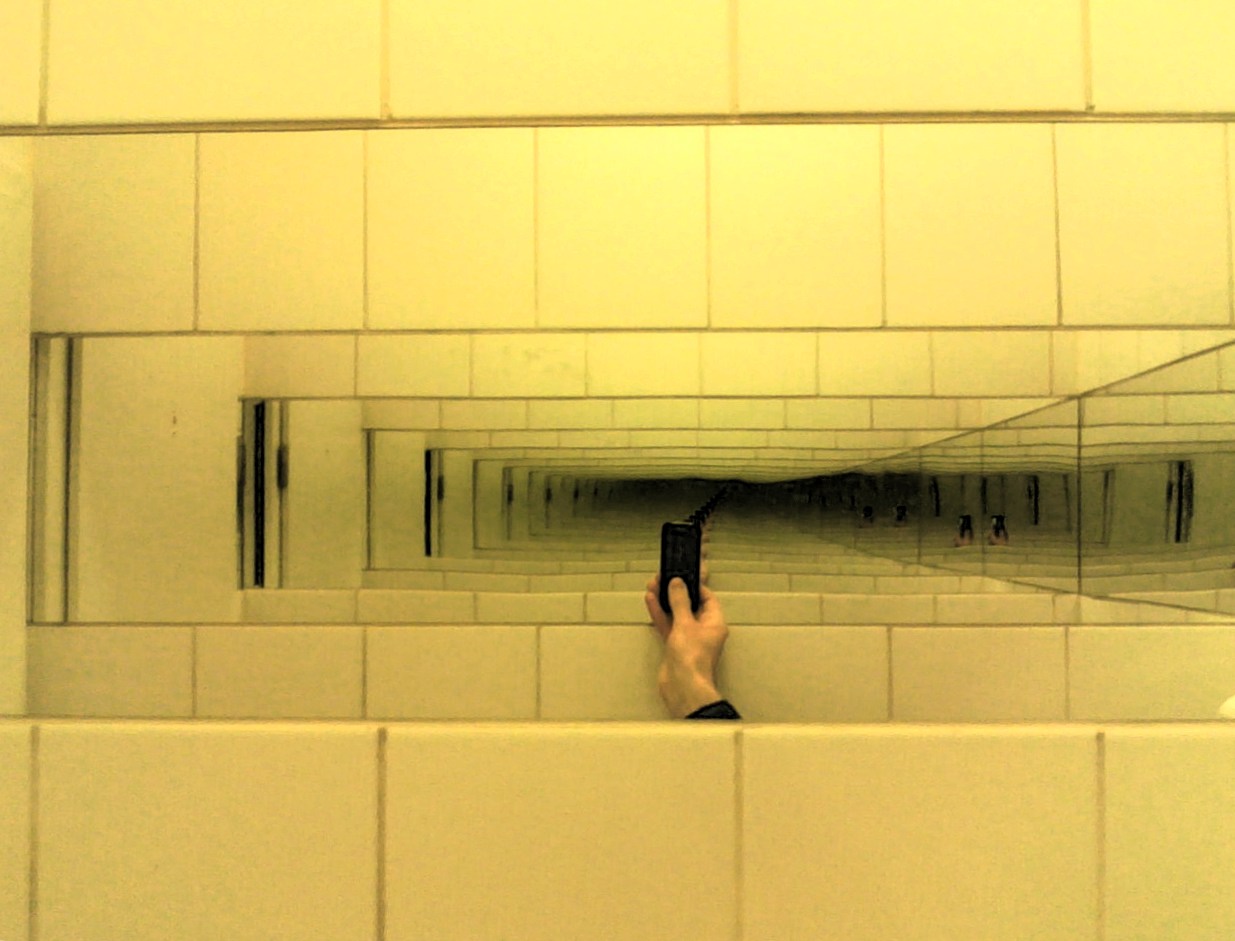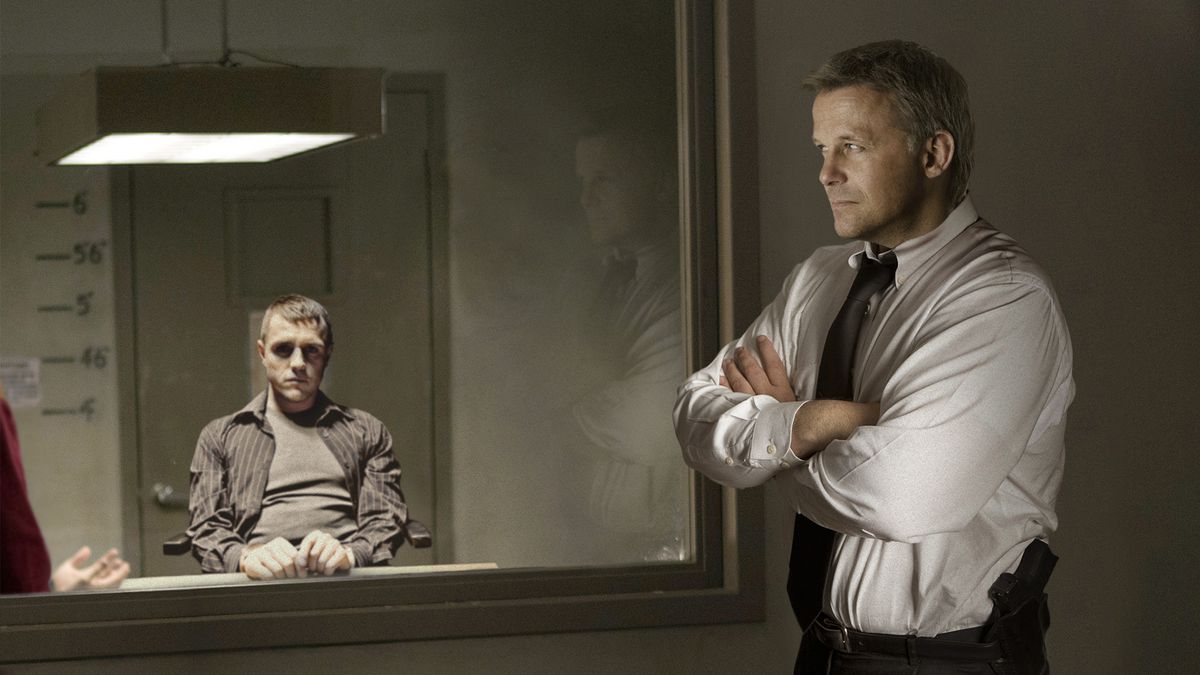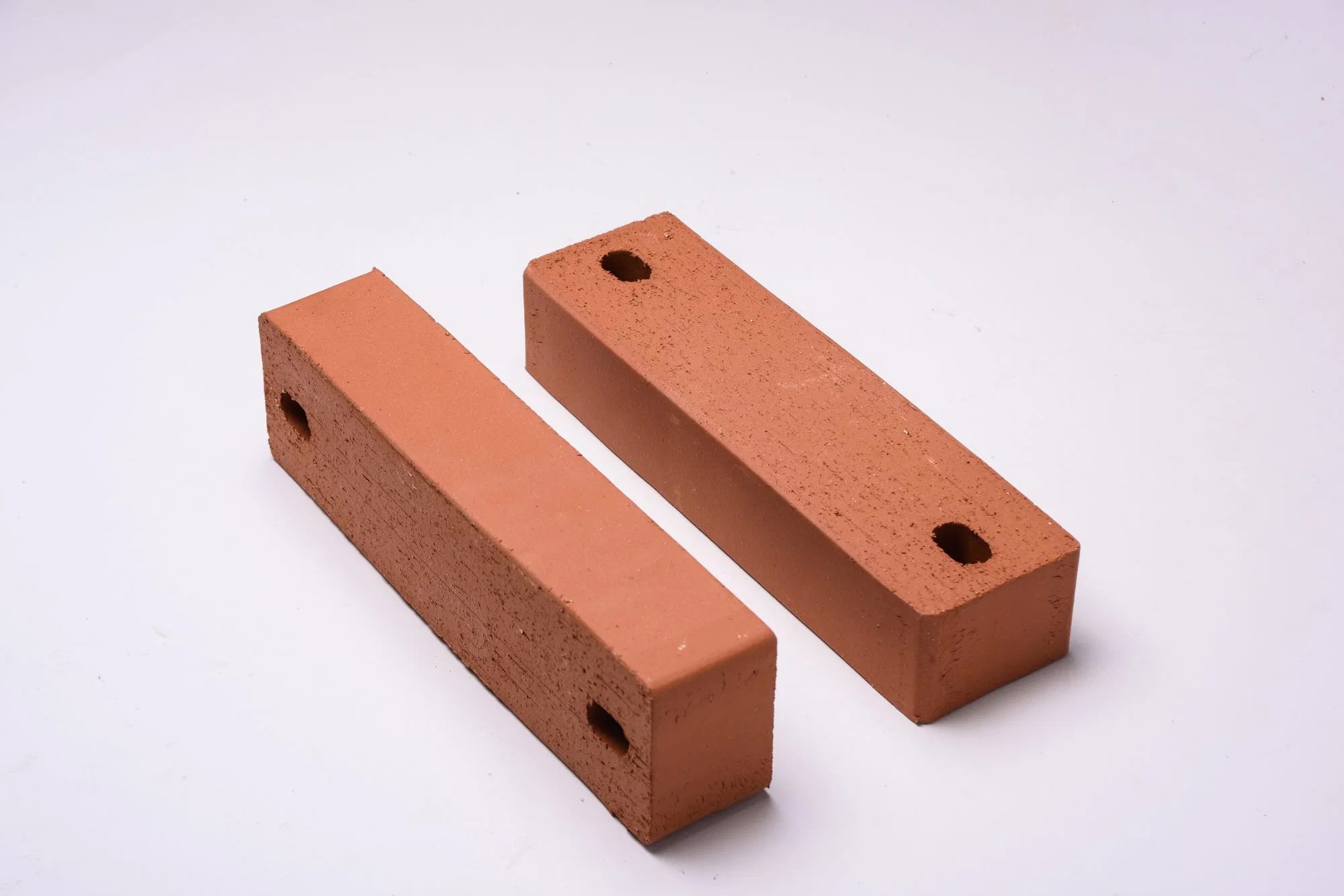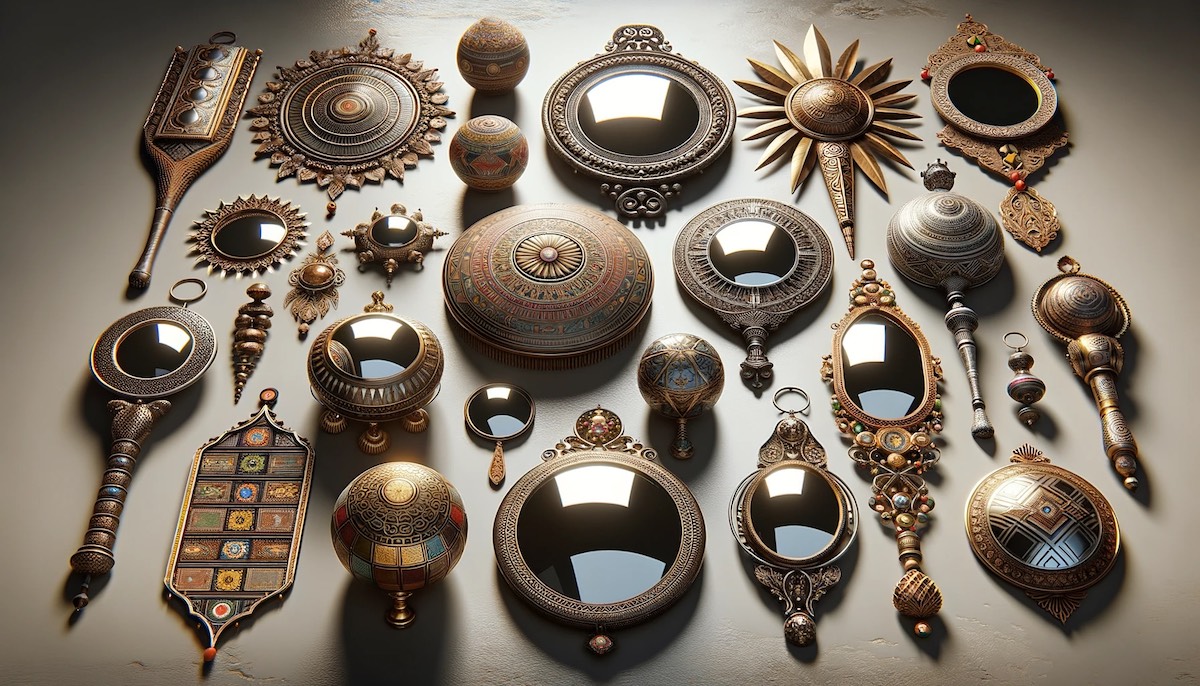Home>Articles>What Is It Called When Two Mirrors Face Each Other


Articles
What Is It Called When Two Mirrors Face Each Other
Modified: December 7, 2023
Discover the fascinating phenomenon known as the 'infinite reflection' when two mirrors face each other. Dive into our collection of intriguing articles exploring this intriguing optical illusion.
(Many of the links in this article redirect to a specific reviewed product. Your purchase of these products through affiliate links helps to generate commission for Storables.com, at no extra cost. Learn more)
Introduction
When two mirrors face each other, an intriguing and mesmerizing phenomenon occurs. This optical occurrence, known as infinite reflection, has captivated scientists, mathematicians, and curious minds for centuries. The sight of reflections endlessly bouncing between the mirrors creates a visually stunning and thought-provoking experience. In this article, we will delve into the world of two mirrors facing each other, explore the physics and mathematics behind the phenomenon, and consider both the practical applications and potential risks associated with infinite reflections.
The concept of two mirrors facing each other can be found in various settings, ranging from bathrooms to funhouses and art installations. Regardless of the context, the captivating effect remains the same. As you stand between two mirrors, the reflection of your image gets bounced back and forth in an infinite loop, appearing to stretch to infinity. This optical illusion creates a sense of depth and infinity that can be truly mesmerizing to behold.
But what exactly is happening when we witness this infinite reflection? To understand the phenomenon, we need to explore the principles of reflection and the concept of an infinite regress.
Reflection occurs when light waves strike a surface and bounce back toward the source. When you stand between two mirrors, the light waves from your image bounce off the first mirror and reflect onto the second mirror, which then reflects them back onto the first mirror, and so on. This continuous process creates an infinite loop of reflections, each one slightly diminished in intensity due to the loss of energy with each bounce.
Key Takeaways:
- The phenomenon of infinite reflection between two mirrors creates a visually stunning and thought-provoking experience, captivating artists, scientists, and individuals alike.
- While infinite reflections have practical applications in art, design, and research, it’s important to be mindful of potential risks such as visual discomfort, disorientation, and psychological unease.
The Phenomenon of Two Mirrors Facing Each Other
The phenomenon of two mirrors facing each other is a captivating optical illusion that occurs when the reflection from one mirror is bounced back and forth between two parallel mirrors. This creates a seemingly infinite loop of reflections, with each reflection appearing smaller and fainter than the previous one.
One of the key factors contributing to this phenomenon is the property of reflection. When light waves hit a surface, they are reflected back at an angle determined by the angle of incidence. In the case of mirrors, the smoothness and reflective nature of the surface allow for a clear and accurate reflection.
When two mirrors are positioned facing each other, the reflection of an object placed between them appears to stretch into infinity. This infinite loop of reflections is a result of multiple bounces between the mirrors. As the light waves bounce back and forth, they continue to create smaller and fainter reflections, giving the illusion of an ever-expanding corridor of images.
This fascinating phenomenon is not limited to mirrors; it can also occur with other reflective surfaces, such as glass or metal. However, mirrors are often preferred due to their high reflectivity and ability to maintain the integrity of the reflection for a longer duration.
While the infinite reflection effect is most commonly observed in small, enclosed spaces, such as bathrooms or dressing rooms, it can also be recreated intentionally for artistic or scientific purposes. Artists and photographers often use this illusion to create visually striking and thought-provoking pieces of art. Scientists and researchers may also utilize the phenomenon in optical experiments or studies on perception and human visual cognition.
From a psychological standpoint, the phenomenon of two mirrors facing each other can evoke a sense of wonder, astonishment, and even disorientation in some individuals. The infinite repetition and illusion of depth can create a hypnotic effect, leaving observers feeling both intrigued and perplexed.
Understanding the physics and mathematics behind this phenomenon can shed further light on its workings and open up opportunities for exploration and experimentation. By unraveling the principles of reflection and exploring the infinite regress, we can gain a deeper appreciation for the beauty and intricacy of this optical illusion.
Reflection and Infinite Regress
Reflection plays a crucial role in the phenomenon of two mirrors facing each other. When light waves encounter a reflective surface, such as a mirror, they bounce off at an equal but opposite angle to the incident angle. This phenomenon follows the law of reflection and allows us to see our own reflection in a mirror.
When two mirrors are positioned facing each other, the reflected light waves bounce back and forth between them in a continuous cycle, creating an infinite regress. The concept of an infinite regress refers to a series of events that continues indefinitely, never reaching an endpoint.
In the case of infinite reflection, each bounce of the light waves produces a smaller and fainter reflection. This is due to the loss of energy with each reflection, as some of the light is absorbed or scattered in the process. As the reflections diminish in intensity, they eventually become too weak for the human eye to perceive, resulting in the illusion of an infinite corridor of images.
Mathematically, the infinite regress can be described using the concept of geometric progression. Geometric progression is a sequence of numbers in which each term is obtained by multiplying the previous term by a common ratio. In the case of infinite reflections, the common ratio is less than one, reflecting the decreasing intensity of the light waves with each bounce.
As the number of reflections increases, the size of each subsequent reflection decreases exponentially. It is important to note that while the reflection becomes fainter, it never truly disappears. However, due to the limitations of human perception, the reflections become imperceptible after a certain number of bounces.
The phenomenon of infinite regress in two mirrors facing each other provides a fascinating glimpse into the nature of light and perception. It illustrates the idea that even seemingly simple optical phenomena can lead to complex and captivating visual effects.
Understanding the principle of infinite regress can also have implications beyond the realm of mirrors. It can be applied to various areas of study, including mathematics, physics, and philosophy. Mathematicians may use the concept of geometric progression to analyze and model phenomena involving exponential growth or decay. Physicists can study how light behaves and interacts with reflective surfaces. Philosophers may delve into the nature of infinity and perception.
Overall, the phenomenon of reflection and infinite regress in two mirrors facing each other offers us a fascinating glimpse into the intricate workings of light, mathematics, and the human perception of visual phenomena. It serves as a reminder that even everyday occurrences can hold hidden wonders and complexities waiting to be explored and understood.
Physics behind the Infinite Reflection
The physics behind the phenomenon of infinite reflection in two mirrors facing each other can be explained by the principles of optics and the behavior of light waves. When light strikes a mirror, it undergoes several processes that contribute to the creation of the infinite reflection effect.
As light waves hit the first mirror’s surface, they are reflected according to the law of reflection, which states that the angle of incidence is equal to the angle of reflection. This reflection process ensures that the image is preserved and appears in the mirror with its left and right orientation intact.
Once the light waves hit the second mirror, they are reflected back toward the first mirror. This second reflection follows the same angle of incidence and angle of reflection as the first reflection. The repeated reflections create a continuous back-and-forth motion of the light waves between the two mirrors.
The key factor that contributes to the infinite reflection effect is the parallel alignment of the mirrors. When the mirrors are parallel to each other, the light waves bounce off at the same angle with each reflection, creating a constant cycle of reflections. This parallel arrangement ensures that the reflected rays continue to bounce back and forth in an infinite loop.
The intensity of the reflected light decreases with each bounce due to factors such as absorption and scattering. Each time the light waves bounce off the mirrors, a small amount of energy is lost. This loss of energy results in a decrease in the intensity of the reflections. Consequently, the reflected image appears smaller and fainter with each successive reflection.
Additionally, the distance between the mirrors can influence the number of visible reflections. As the distance increases, the angle of incidence of the reflected light decreases, leading to a narrower angle of reflection. This narrowing angle causes the reflected rays to converge and eventually become too small for the human eye to perceive. Thus, the number of visible reflections depends on factors such as the distance between the mirrors and the observer’s distance from the mirrors.
Overall, the physics behind the infinite reflection phenomenon can be attributed to the principles of reflection, parallel alignment of the mirrors, and the cumulative effects of energy loss with each successive bounce. Understanding these principles helps us appreciate the beauty and complexity of the infinite reflection effect and its application in various fields of science, art, and perception.
The phenomenon of two mirrors facing each other is called an “infinite reflection” or “mirror infinity effect.” This occurs when light bounces back and forth between the mirrors, creating a seemingly endless series of reflections.
Mathematical Representation of Multiple Reflections
The phenomenon of multiple reflections in two mirrors facing each other can be mathematically represented using concepts such as geometric progression and the law of reflection. These mathematical principles allow us to analyze and calculate the number of reflections as well as the size and intensity of the successive reflections.
Geometric progression is a mathematical sequence in which each term is obtained by multiplying the previous term by a constant ratio. In the case of multiple reflections, the common ratio represents the proportion by which the intensity of the light decreases with each bounce.
Let’s consider an example where the initial incident intensity of the light waves is represented by “I”. The intensity of the first reflection will then be “Ir = r * I”, where “r” is the reflection coefficient, determined by the reflective properties of the mirrors. The reflection coefficient is a value between 0 and 1, representing the fraction of light retained after each bounce.
After the first reflection, the intensity of the light waves decreases and the second reflection can be calculated as “Ir2 = r * Ir = r * r * I”. Similarly, the intensity of the nth reflection can be expressed as “Irn = r^n * I”. As “n” approaches infinity, the intensity of the reflections becomes infinitesimally small, resulting in imperceptible reflections.
The number of reflections visible to the human eye depends on various factors, including the distance between the mirrors and the observer’s position. If the mirrors are positioned closer together, the parallel reflections will continue for a greater number of bounces before the intensity diminishes to a point below the threshold of human perception.
From a mathematical standpoint, the number of visible reflections can be calculated using logarithmic functions. By taking the logarithm base “r” of the intensity threshold (the minimum detectable intensity by the human eye), the number of reflections at which the intensity falls below the threshold can be determined.
Another aspect that can be mathematically analyzed is the apparent size of the reflections. As the reflections repeat, each successive reflection appears smaller due to the decrease in intensity. Mathematically, the apparent size of the reflection can be calculated using a formula involving the focal length of the mirror and the distance between the mirrors.
Overall, the mathematical representation of multiple reflections in two mirrors facing each other incorporates principles of geometric progression, the law of reflection, and logarithmic functions. These mathematical tools allow us to quantify and analyze the number of reflections, the intensity of the reflections, and the apparent size of the successive reflections. Understanding these mathematical concepts deepens our appreciation for the intricate and fascinating nature of the infinite reflection phenomenon.
Read more: What Is A Dresser With A Mirror Called
Practical Applications of Infinite Reflections
While the phenomenon of infinite reflections in two mirrors facing each other is primarily a visual spectacle, it also has several practical applications across various fields. Let’s explore some of the practical applications of this intriguing optical phenomenon.
Art and Design: Artists and designers often incorporate infinite reflections into their creations to produce visual illusions and captivating installations. The infinite repetition and illusion of depth created by the reflections can add a sense of mystery and intrigue to artworks, sculptures, and installations.
Photography and Cinematography: Photographers and cinematographers frequently utilize the effect of infinite reflections to capture unique and mind-bending images. By strategically placing mirrors or reflective surfaces in their shots, they can achieve visually striking compositions and create a sense of infinite space and dimension.
Perception and Psychology Studies: Infinite reflections can serve as valuable tools in studying human perception and cognitive psychology. Researchers can use this phenomenon to investigate how people interpret and process visual information in environments with complex and repetitive reflections.
Optical Experiments and Research: Scientists and researchers in the field of optics employ the concept of infinite reflection to conduct experiments and further their understanding of light behavior. This phenomenon allows them to study the interactions between light waves and reflective surfaces, as well as explore applications of optics in various fields.
Interior Design and Architecture: Infinite reflections can be effectively incorporated into interior design and architectural projects to create visually stunning spaces. The strategic placement of mirrors and reflective surfaces can make rooms appear larger, enhance natural lighting, and add a unique visual element that captivates occupants.
Mirror Manufacturing and Testing: The phenomenon of infinite reflections can be used to evaluate the quality and effectiveness of mirrors in terms of their reflective properties. By examining the clarity, intensity, and number of visible reflections, manufacturers can assess the performance of mirrors and ensure they meet quality standards.
Entertainment and Funhouse Attractions: Funhouses and amusement parks often feature rooms with two mirrors facing each other to create a sense of disorientation and an entertaining optical illusion for visitors. This adds an element of fun and excitement to the overall experience.
These are just a few examples of the practical applications of infinite reflections in different domains. This mesmerizing optical phenomenon continues to inspire and fascinate professionals from various fields, pushing the boundaries of creativity and innovation.
Risks and Dangers of Infinite Reflections
While the phenomenon of infinite reflections in two mirrors facing each other is visually captivating, it is important to be aware of the potential risks and dangers associated with this optical illusion. Let’s explore some of the risks that can arise from prolonged exposure or improper use of infinite reflections.
Visual Discomfort and Fatigue: Staring at an infinite reflection for an extended period can cause visual discomfort and fatigue. The continuous repetition and intensity of the reflections can strain the eyes and lead to symptoms such as eye strain, headaches, and blurred vision. It is important to take breaks and limit exposure to prevent eye strain and discomfort.
Disorientation and Loss of Balance: The infinite reflection effect can create a sense of disorientation, making it difficult for individuals to maintain their spatial perception. This disorientation can lead to loss of balance and an increased risk of stumbling, especially if the infinite reflections are present in a confined or narrow space. It is essential to be cautious and maintain awareness of one’s surroundings to prevent accidents.
Epileptic Seizures: Some individuals with photosensitive epilepsy may be triggered by rapidly flashing or repetitive visual patterns, including infinite reflections. For these individuals, exposure to the rapid and continuous reflections can potentially induce seizures. If you or someone around you has a history of epilepsy or seizure disorders, it is advised to avoid or limit exposure to environments with infinite reflections.
Psychological Discomfort: For some individuals, the repetitive and disorienting nature of infinite reflections can cause psychological discomfort or unease. This can manifest as feelings of dizziness, anxiety, or a sense of being trapped within a never-ending visual loop. If you experience any psychological discomfort while viewing infinite reflections, it is important to remove yourself from the environment and seek a calm and stable setting.
Light Sensitivity: Infinite reflections can create intense and concentrated light sources due to the reflection of light waves between the mirrors. This can be especially concerning for individuals with light sensitivity or those who suffer from conditions such as migraines. Prolonged exposure to bright and intense light can worsen symptoms and trigger headaches or other light-induced sensitivities.
To minimize the risks and dangers associated with infinite reflections, it is recommended to practice moderation and be mindful of personal limits. Limit the duration of exposure to infinite reflections, take breaks to rest the eyes, and maintain spatial awareness to prevent accidents. Furthermore, it is important to consider individual health conditions and sensitivities when encountering environments with infinite reflections.
By being aware of the potential risks and taking necessary precautions, one can still appreciate the beauty and wonder of infinite reflections while prioritizing safety and well-being.
Conclusion
The phenomenon of two mirrors facing each other, creating an infinite reflection, is a captivating and visually stunning optical illusion. It embodies the principles of reflection, infinite regress, and the behavior of light waves. This mesmerizing effect has practical applications in various fields, including art, photography, psychology, and optics. However, it is important to be mindful of the potential risks and dangers associated with prolonged exposure or improper use of infinite reflections.
By understanding the physics and mathematics behind the phenomenon, we can appreciate the intricate workings of light, reflection, and perception. The mathematical representation of multiple reflections helps us analyze and calculate the number of reflections, their intensity, and size. This knowledge deepens our understanding and admiration for the phenomenon’s complexities.
Practically, infinite reflections find their place in artistic expressions, interior design, and architectural creations. They serve as tools for studying perception and cognitive psychology and contribute to scientific research in the field of optics. However, it is crucial to consider the associated risks, such as visual discomfort and fatigue, disorientation, and potential triggers for seizures or psychological discomfort.
In conclusion, the infinite reflection phenomenon offers us a glimpse into the beauty and complexity of light and perception. It engages our senses and sparks our curiosity in various fields of study. By appreciating the magic of infinite reflections while respecting the potential risks, we can continue to explore, innovate, and create in ways that captivate our imagination and push the boundaries of human understanding.
Frequently Asked Questions about What Is It Called When Two Mirrors Face Each Other
Was this page helpful?
At Storables.com, we guarantee accurate and reliable information. Our content, validated by Expert Board Contributors, is crafted following stringent Editorial Policies. We're committed to providing you with well-researched, expert-backed insights for all your informational needs.















0 thoughts on “What Is It Called When Two Mirrors Face Each Other”